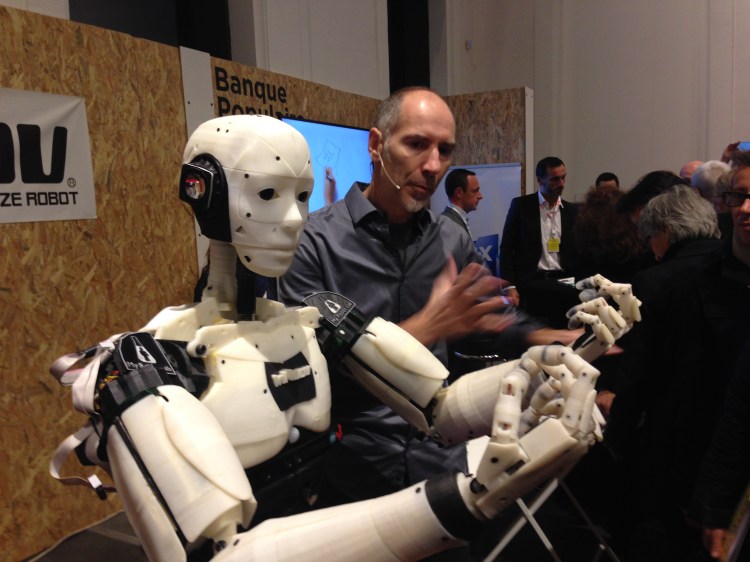TOULOUSE, France — If you want to understand just how quickly the robot revolution may be coming, and how widespread it may be, it’s worth meeting Gael Langevin.
The French sculptor and designer has, by his own admission, almost zero technical background. He has spent most of his career creating branding campaigns for big companies. And yet, despite this lack of training and preparation, Langevin has become a central figure in the open-source robotic world.
Langevin has tapped into the power of crowdsourcing, and the accessibility of 3D printing. Sharing his designs freely, he has constructed a life-size robot, as well as clear instructions for anyone to build their own. The result is both a product and a movement.
“It’s like a sculpture that I can share with everyone,” he said. “I wanted this to be open source from the beginning. It’s like a gift that I can keep giving.”
I met Langevin recently when he was in Toulouse for the Futurapolis conference. He was giving demos, as well as speaking about the future of robotics.
Though he still works full-time on his branding business, he’s also formed a company, called InMoov, around his robotics work. As part of the development, he created a specialized circuit board for robotics (with the help of some Dutch engineers), which he hopes to sell in order to finance his own continued work on the robot.
It’s hard to measure the exact impact of Langevin’s project. But it’s already enabled a 15-year-old in Greece to make his own version of Langevin’s work. And it’s created a massive community around the project, people who are problem-solving and improving the work as they make their own versions. Make magazine featured many of these projects this year.
Not bad for a guy who says he had no idea what Arduino was when he launched the project in 2012.
At the time, a French car company had asked Langevin to design a prosthetic hand with a futuristic appearance. In the course of researching the project, Langevin learned how to 3D-print the material to make it. He then uploaded his design to Thingiverse, an online community of people who share designs for physical objects.
The response was positive, and other Thingiverse members started printing their own versions, and contributing their own modifications. That inspired Langevin to take his project further and eventually build an entire robot.
The version he brought to Toulouse is nearly complete from the waist up. Speaking into a microphone, Langevin can give basic directions and ask simple questions that prompt various vocal responses and graceful gestures from the robot. Most of these responses are enabled using bits of code Langevin borrowed from various code libraries online.
Currently, he’s trying to solve the problem of building legs, an enormously complex and potentially expensive undertaking. He’s very focused on keeping the costs low, so that the project remains accessible to as many others as possible. So figuring out how to make the robot walk means creatively engineering a solution around low-cost parts.
To get a better sense of the robot, check out InMoov’s official video here:
Here’s my video from Futurapolis, though it’s a bit difficult to hear over the noise of the crowd:
VentureBeat's mission is to be a digital town square for technical decision-makers to gain knowledge about transformative enterprise technology and transact. Learn More

